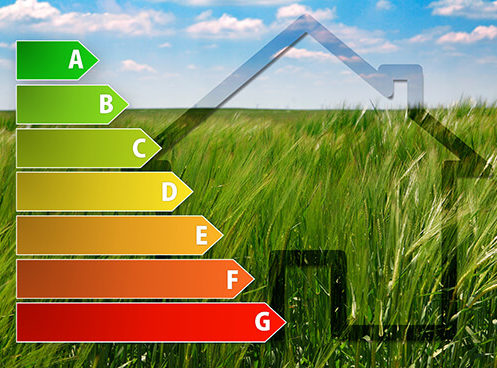The Seasonal Energy Efficiency Ratio (SEER) provides a numeric value by which you can determine the maximum efficiency of an air conditioner. A higher rating can impact your energy costs and comfort level.
At We Care Plumbing, Heating and Air, we want you to understand the essential terminology of heating, ventilation, and air conditioning (HVAC) to help you make informed decisions. Read on for our essential explanation of SEER and why it contributes an important criterion to your choice of equipment.
We Care Defines SEER
SEER stands for Seasonal Energy Efficiency Rating, also called the Seasonal Energy Efficiency Ratio. It presents a ratio of an air conditioner’s cooling output during a normal cooling season divided by the Watt-Hours of energy it uses. The simple calculation uses a constant indoor temperature but a range of outdoor temperatures from 60 degrees Fahrenheit to more than 100 degrees Fahrenheit.
The SEER ratio represents a maximum efficiency rating, similar to the miles per gallon (MPG) for a motor vehicle. When you shop for a vehicle, you’ll see the MPG rating for the city and the highway. It will also have a combined rating. The highway MPG sticker might read 30 MPG, but you will only get 30 MPG under ideal conditions. The SEER rating on an air conditioning unit works much the same way.
Just like with MPG, a higher number means better efficiency. It also represents how the unit functions under ideal conditions. You won’t always get 21 SEER ratio performance from a 21 SEER rated air conditioner. It could function at a lower SEER during certain conditions.
What Are the Benefits of a SEER?
The higher a SEER, the more energy-efficiency the unit provides and the greater indoor comfort it can provide. The minimum rating a system can receive is a 13 SEER. Most modern air conditioner units rate up to a 21 SEER. You can find a few cooling units that earned a higher SEER than 21, but they remain rare. You can find units with up to a SEER 33. For context, most older systems rated an eight or nine SEER, so a new system can almost double efficiency.
The US Department of Energy (DOE) sets minimum SEER requirements for each geographical region of the US. In the North, a unit must rate at least a 13 SEER, but in the South, the minimum rating of 14 applies.
How a SEER Rating Works With Other Factors
A high SEER rating doesn’t guarantee you will lower your energy bills. Your home’s size, the condition of the ductwork, and other conditions also influence the efficiency of the system. We’ll determine the load calculation for your home to help determine the best unit size for your home. You should also institute other energy-saving tips to obtain the maximum SEER from your unit and save the most money on your energy bills.
Experience Greater Indoor Comfort
Living in any hot region of the US, you will benefit from an air conditioner unit with a high SEER during the summer months. Your air conditioner will keep your home cooler. Most high ratio SEER units feature a variable-speed blower and a two-stage or variable-speed compressor. Those with lower SEER ratings, such as a 13 or 14, typically feature only a single-stage compressor, and they run only at one speed. This causes the lower-rated units to cycle on and off, which creates hot and cold spots in your home. The single-stage systems work harder to cool the house. A single-stage system needs to run for a long time to address the humidity in your home.
SEER System Costs
The higher the SEER, the more the unit costs. You can find ways to save money on a system without cutting corners. Once you have met with We Care Plumbing, Heating, and Air to determine your home’s load calculation and needed SEER, you can look at various manufacturer’s websites to find rebates. Also, check the Department of Energy website for tax credits on energy-efficient air conditioning systems.
History of SEER
While they aren’t a new thing, the SEER scale has only existed since 1975. Congress created it when it passed the Energy Policy and Conservation Act. The 1975 law required the US Department of Energy to create minimum energy conservation standards for common equipment available to consumers. It wasn’t until 1992 that the DOE created its first standard, stating that equipment must rate at least a minimum of 10 SEER. The department updated its regulations in 2006, increasing the minimum for AC units to a minimum of 13 SEER. Updated again in 2015, the SEER minimum went up to its current minimum of 13 or 14, depending on the area of the country in which you reside. The DOE will again update its regulations in 2023. According to the US Energy Information Administration (EIA), Northern states will have a requirement of a minimum of SEER 14 while Southern states must install a unit with a minimum of 15 SEER.
What SEER Does the Typical Homeowner Choose?
While most homeowners choose a unit with a SEER of 15 to 18, the air conditioning unit you choose depends on your load calculation and your other equipment. A local HVAC company or contractor, like We Care Plumbing, Heating, and Air can conduct a load calculation for you.
Does a Higher SEER Always Mean More Expense?
Typically, the higher the SEER, the more expensive the unit, but you can shop around and save money. Within any SEER, you can find a range of models to compare prices. By balancing your initial outlay and your over-time energy cost savings, you find an air conditioner that fits your budget and cooling needs. The current tax credit for the purchase of energy-efficient equipment provides you with a tax credit of $500. You can only obtain the credit when you upgrade the equipment in your existing primary home. You can’t take it on equipment installed in your investment properties or new construction.
While it might take a few months from your purchase date to receive the $500, that provides a pretty decent discount. By itself, the tax credit brings a SEER 15 unit cost to $3,000. A manufacturer’s rebate could lower the cost even more.
How Do I Know What My Current AC unit’s SEER Is?
You can find the SEER of your current AC unit on a sticker on the AC unit. Check the side and the front of the unit for the sticker. The SEER will be printed with the serial number and model number of the unit. If the sticker wore off but you still have your owner’s manual, check it for the model number and serial number. Phone the manufacturer of the device; provide the serial number and model number. They can tell you the SEER.
Reliable AC Repair
Contact us at We Care Plumbing, Heating and Air at your convenience for more information on keeping your HVAC system in top condition. We serve southern California with locations in Temecula, Orange and Murrieta and offer a full range of heating services and cooling services .
Related Articles
Things to Consider for a New AC System
Best HVAC System for Your Southern California Home
Why Should I Hire a Professional HVAC Company?
Author Bio: Rusty Cochran
 Rusty Cochran is the President of We Care Plumbing, Heating and Air Conditioning. We Care began humbly, operating in his family’s living room. Under Rusty’s strong leadership, We Care has grown from 2 employees to over 200 employees. We Care Plumbing, Heating and Air has gained recognition across the HVAC industry, receiving numerous awards and certifications, including being named the ACCA Contractor of the Year, The Map Presidential Award several times, Angie’s List Super Service Award, NATE certification, and multiple Dave Lennox Awards. LinkedIn Profile
Rusty Cochran is the President of We Care Plumbing, Heating and Air Conditioning. We Care began humbly, operating in his family’s living room. Under Rusty’s strong leadership, We Care has grown from 2 employees to over 200 employees. We Care Plumbing, Heating and Air has gained recognition across the HVAC industry, receiving numerous awards and certifications, including being named the ACCA Contractor of the Year, The Map Presidential Award several times, Angie’s List Super Service Award, NATE certification, and multiple Dave Lennox Awards. LinkedIn Profile






